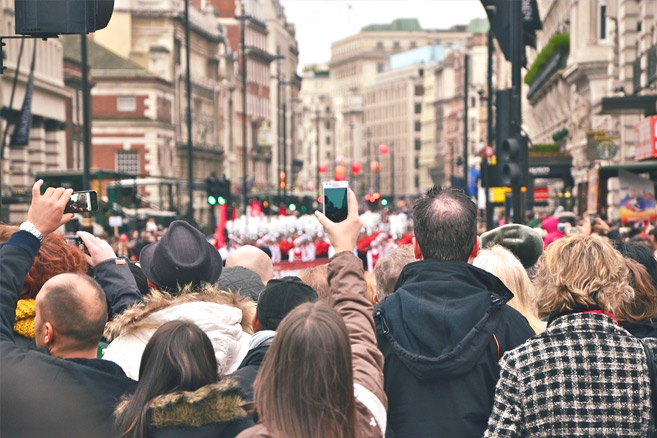3 Magic Ingredients for Donation-Driving Fundraisers
For many not for profit boards, the first response when faced with raising philanthropic support is: “We need to have a fundraiser!” Though some fundraising events are extraordinarily successful and raise a lot of money, their success is based on three magic ingredients: a compelling cause; an enthusiastic, engaged, and experienced cadre of volunteers; and a cultivated, loyal audience of supporters that will choose your event over a range of other opportunities. Organizations that have these ingredients are extraordinarily successful. But, they are few in number.
Why do so few fundraisers fall short? One reason comes down to margins. If you fully account for all of the direct and indirect costs attributed to any given event, most events hover around break-even—some are modestly profitable, some lose money.
Of course, the value of a fundraiser doesn’t depend solely on money received during the event itself. Fundraising events are very effective as means (not as ends) to succeeding at fundraising. They are important elements of an integrated program that should include a focus on individuals (major gifts, planned giving, and direct appeal), foundations, corporations, and other associations and charitable entities that care about your cause. Therefore, fundraising events fail because they focus on short-term income instead of long-term relationship building.
Fundraising events are most effective for building awareness and cultivating prospective donors. To achieve these goals, the right people need to attend your events and hear your message.
Getting the Right People to Your Fundraising Event
There are event management companies that devote an immense amount of time and resources to get the right people to attend their clients’ events. They understand that the best events require tapping into the right social and business networks to leverage relationships.

Promote, promote, promote. It is sometimes worthwhile to hire a local PR firm that can secure radio or TV interviews or place articles in the right media. Create a buzz.
Smaller not for profits can benefit from borrowing some of their proven strategies.
- Start months in advance—if it’s a large gala, it takes about a year to plan.
- Stage an event that is within your capacity to deliver—don’t overreach.
- Form a planning committee that comprises the most prominent individuals you can recruit. It is very important that you vet this committee carefully. They need to play well together, treat the staff respectfully, and do a lot of work.
- Create a job description for the committee, including the responsibility to do what it takes to fill the venue with prospective donors—first and foremost, prominent individuals, and their friends.
- Assign a staff member (your most patient and friendly development professional) to liaise with the committee and provide full administrative support, including organizing and scheduling meetings, sending out notices, taking notes, distributing information, developing collaterals, etc.
- Work with the committee to identify prominent individuals to serve in key functions. These are individuals who have access to grants or sponsorships, influence with people with financial capacity and the media, and/or appeal to those you want to attract. Key functions include honorary chair, award recipient, emcee, keynote speaker, or whatever else you can imagine that makes sense. But don’t overdo it—each role needs to be well-conceived and meaningful.
- In terms of the actual event—craft a unique experience or stage at a location that is not usually accessible to the general public.
- Promote, promote, promote. It is sometimes worthwhile to hire a local PR firm that can secure radio or TV interviews or place articles in the right media. Create a buzz.
- Make a detailed list of the prospective donors that you want at the event. Develop cultivation and recruitment strategies. Work through social and business peers to help turn them out.
Getting Your Message Across
Events must focus on creating experiences that are satisfying and appealing. Balancing the experience—fun, engaging, entertaining—with the intended message of your cause can at times be tricky. Your message can easily get lost or diminished by the festivities. To get your message across focus on the following:
- Display prominent visuals at the venue. Whether looping videos, a stream of still shots, posters, or collaterals, make sure you visually blanket the event with your message—uplifting and interesting.
- Prep board members, staff, and volunteers with key message points to share with others throughout the evening. These include program successes, data regarding impact, anecdotes about changed lives—interesting tidbits that communicate the organization’s value and worth.
- Match board members or other volunteer leaders to appropriate prospects. I used to provide my volunteers and staff colleagues with 3×5 cards that contained names of individuals, a little background on them, and just one or two questions to ask. (Maybe today I’d text it to them.) The number one responsibility of volunteers and staff members was to find the people assigned to them, welcome them, and engage in conversation. We’d debrief the next day. It was very effective.
- Keep the presentation program tight and short, and to the point. Stage it so that you get everyone’s attention. Make your case—the value you bring, the problems you solve and examples of how you solve them, the impact you’ve had, and the benefit to people and the community. Use interesting stories. Make sure it is emotional and compelling.
Making an Appeal

Getting the Message Across: Prep board members, staff, and volunteers with key message points to share with others throughout the evening. These include program successes, data regarding impact, anecdotes about changed lives—interesting tidbits that communicate the organization’s value and worth.
Asking for financial support at an event needs to be handled in the right way. If event tickets are expensive and people have spent money on raffles or auction items, you risk appearing disingenuous. Major gifts should be secured in advance and announced during the event. If you have a call to action, it needs to be properly staged and not uncomfortable for the guests.
At one recent event I attended, the organization did this exceptionally well. A number of major donors stood up to announce their significant support to the organization. They were thoughtfully recognized. Then, a very polished emcee took the stage and, through humor and compelling anecdotes, combined with live texting from cell phones, challenged attendees to reach a goal for the evening. No one was put on the spot or embarrassed. And the organization raised a lot of money. Needless to say, the anecdotes were powerful and the right people were in the room. Most importantly, it was fun and satisfying—people walked away knowing they had done a good thing.
An overt call to action is not always required at the event—but communicating a compelling message is. And personal follow-up with key prospects is imperative. Members of the extended advancement team—staff, board, and other fundraising volunteers—need to be deployed. Through personal phone calls or visits, they should follow up, engage in conversation, ask about impressions, and, when appropriate, ask for financial support. There should be a plan for every prospect contacted. Each engagement should be a purposeful conversation. Whoever is involved in the outreach must be comfortable with the role, clear about expectations, fully briefed about the prospect, and well informed about the program and gift opportunities.
Finally, never lose sight of the real purpose. The bottom line is not just raising money, but doing good. The money is not the end, it is the means to the end—the positive impact on the lives of those you serve.

